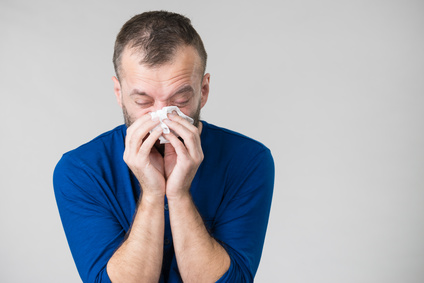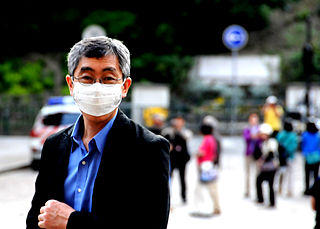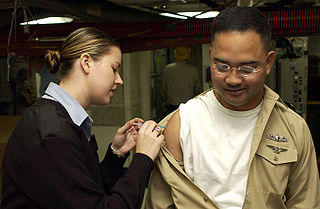Coronavirus Disease 2019 (COVID-19) Frequently Asked Question (FAQs)
Why is it called COVID-19?
COVID-19 stands for coronavirus disease 2019. It refers to the disease that arises with the specific type of coronavirus that emerged in late 2019. This virus, severe acute respiratory syndrome coronavirus 2 (SARS-CoV-2), is also known as the novel coronavirus 2019. Although it is commonly referred to as the coronavirus, this does not differentiate the current COVID-19 from other diseases caused by the same family of viruses.
COVID-19 is only one strain of coronavirus and there are many other strains. It is not a new virus family. Some coronaviruses have also caused other serious and deadly diseases like SARS (severe acute respiratory syndrome) which also causes a lung infection (pneumonia) and MERS (Middle East respiratory syndrome). SARS first emerged in 2002 and MERS in 2012.
Is COVID-19 the same as a ‘bad flu’?
While there are some similarities, COVID-19 is not the seasonal flu. It is also not just another ‘bad strain of the flu’ or a new type of swine flu (H1N1). Both influenza and coronavirus are viruses. Both can be easily spread through droplets and person-to-person contact. Both cause respiratory infections. However, COVID-19 is an entirely different virus from the flu virus. Symptoms may seem similar but COVID-19 can have far more serious long-term consequences. COVID-19 is also highly contagious and therefore easily spread.
Are only the elderly at risk?
The elderly are at a greater risk of serious complications and death from COVID-19. Even younger adults with chronic diseases such as heart disease, lung disease and diabetes, are also in a high risk group. Most younger adults experience a mild to moderate form of the disease. However, some young and healthy adults may develop a severe form of the disease which may result in long-term and possibly permanent complications such as lung damage.
Is social distancing necessary?
Social distancing or physical distancing is advisable to curb the spread of the virus. A distance of at least 6 feet is advised to minimize the risk of contracting the virus from an infected person. However, it is important to note that droplets containing the virus (secretions from an infected person) can still transmit the virus to another person through contact with common surfaces and through the air over a short distance.
Therefore social distancing in the form of maintaining a 6 feet distance is not sufficient to prevent infection. It is helpful nevertheless. Prescribed hygiene procedures like regular hand washing, use of hand sanitizers and disinfecting surfaces are necessary even if there has been no direct contact with an infected person.
Can you go outdoors during “shelter in place”?
Going outdoors may not be prohibited during a shutdown or lockdown (“stay at home” or “shelter in place” order) provided that social distancing is maintained. Some countries are not allowing residents to exit their property so going outdoors in the garden is allowed. Other countries are allowing residents to leave their property for specific reasons only and for short periods at a time.
Visiting public places with large amounts of people increases the risk of contact and therefore transmission of the virus. Instead places that have few people are a better option where the recommended social distance can be maintained. It is important to consult with local authorities about the rules of a lockdown before venturing outdoors.
Remember that outdoor surfaces may also be contaminated and hand washing and regular sanitizing is recommended particularly after exposure to public places. It is also important to understand that social gatherings among extended family members and close friends should be avoided altogether, whether indoors or outdoors. Sheltering should only involve the residents of a specific house or apartment without guests.
Can COVID-19 be transmitted through food?
Currently it appears that the infection cannot be transmitted through food. Even if the food is contaminated, COVID-19 is a respiratory virus and causes disease by gaining entry through the airways. However, touching contaminated packaging and then your face (particularly nose or mouth) could allow the virus to enter the airway. Fortunately the virus cannot survive for long periods on surfaces, including packaging, but good hygiene should be practiced.
Can COVID-19 be transmitted through water?
There is no evidence to suggest that COVID-19 is waterborne just as it is not foodborne. Therefore tap water does not pose any risk. Stockpiling of water is a common occurrence during times of crisis, such as with a global pandemic. However, it is unnecessary to stockpile bottled water and only consume it. If the water supply in an area was safe to consume beforethen it should continue to be so unless there has been some disruption to the cleaning and distribution of water.
Is there a COVID-19 vaccine?
More than one experimental vaccine is undergoing trials at the time of this article. However, there are several phases for testing a vaccine before it can be widely distributed for the prevention of infection. If the vaccine proves to be successful in preventing infection, it will not be available for this current COVID-19 outbreak in early 2020. It may only be available by mid to late 2021 although scientists are working as fast as possible.
Can you get re-infected with coronavirus?
The immune system produces antibodies against the virus at the time of infection. It is these antibodies that then provide future protection. At this time it is not conclusively known whether infection will provide lifelong immunity to COVID-19. However, it seems very likely that this will be the case or at the very least there will be immunity for a period of time after infection. There were some reports of re-infection but it appears that this may have rather been a matter of the initial infection not having resolved.
Can antibodies from recovered people be used?
Research is underway to use antibodies for the treatment and possibly prevention of COVID-19 in people who have not been previously infected. This type of immunoglobulin therapy has been successful in treating and preventing some viral infections. However, it is not as yet available for COVID-19. It is also important to note that this may not be the only possible treatment for COVID-19 in the future.
Is there a cure for COVID-19?
There is no cure for COVID-19 as yet. Although antivirals are being tested and other drugs, none have as yet proven to be an effective cure. The best way to overcome the infection is to isolate yourself, rest, drink plenty of water and maintain a healthy and balanced diet. Acetaminophen (paracetamol) is usually helpful in managing the symptoms.
Some people who develop more severe forms of the disease and require hospitalization and even ventilation. However, this is not necessary for most people infected with the virus. The body overcomes the virus with time and the infection resolves completely in most people without any treatment beyond supportive measures.
References:
- Naming the coronavirus disease (COVID-19). WHO
- Coronavirus Resource Center. Harvard Health
- Coronavirus Social Distancing and Self Quarantine. John Hopkins Medicine
Last updated on 20 March 2020.






